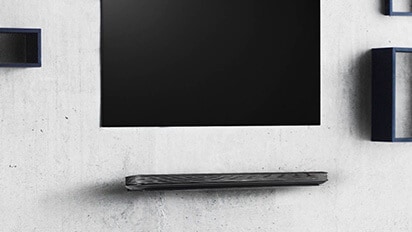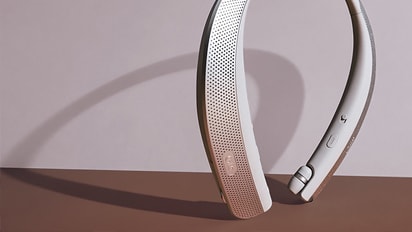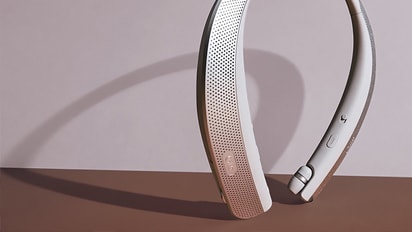At a Glance
An OE error code on your dishwasher's display indicates that the unit has detected a drain issue, most often resulting from food clogs or an installation issue. Luckily, both of these issues can sometimes be resolved with just a few troubleshooting steps!
If you have error codes such as AE, E1 or others, please visit our detailed Error Codes - Dishwasher article to resolve the error.
An OE error indicates water is not draining from the appliance.
Turn off the appliance.
OE error can occur because filters are clogged, there is a drainage problem, or the waste spigot is clogged. This error will display when water is not draining from the appliance.
Check the filter
Filters are clogged. Clean the filters. Drainage may have a problem due to food residue stuck in the filter.
Check the drain hose
Check for clogged, kinked, or a frozen drain hose. Adjust the drain hose. Make sure that the line is not kinked. To avoid kinks or pinching the drain hose, be sure to pull on the drain hose while sliding the dishwasher into place.
Do not allow any slack behind the dishwasher.
Check the spigot
Check the waste spigot. Remove the knockout plug with a hammer and screwdriver. Make sure the plastic debris is not remaining inside of the spigot.
-
Clean the filter.
Remove larger food debris and items that may not wash out and clean the dishwasher filter.
NoteIt is recommended you regularly perform maintenance activities such as cleaning the spray arms, cleaning the filters, and running a maintenance cycle. For more information, please visit our Maintenance - Dishwasher article.
After performing the dishwasher maintenance, attempt to run a HEAVY DUTY or NORMAL cycle with no dishes or detergent. This will flush out the unit and test the drain function.
-
How many spray arms do you have?
NOTE: The look and position of your filters and removal instructions may vary slightly from the instructions below. Refer to your owner's manual for model specific instructions. Visit our Documents and Manuals to download a copy.
-
-
Check the drain hose.
The dishwasher will not drain properly if the drain hose is kinked. Inspect and adjust the drain hose to avoid kinks.
-
Look under the sink for a ridged or corrugated hose. It will be either white, opaque, or gray. Check if anything has gotten pushed against it or on top of it, causing the hose to become pinched or kinked.
-
Straighten hose and run test cycle.
-
-
Check the air gap.
OE is triggered when the dishwasher is not draining properly. Check the drain air gap or in-sink disposal for debris and clogs.
View How to Clean the Air GapNote: Be cautious of sharp edges when handling the stainless steel filter.
Remove food residue caught in filters to prevent the build up of odor-causing bacteria and possible drainage problems.A.
Turn unit OFF.
Press the POWER button to turn off the washing machine.
B.
Remove cover and cap.
Remove the air gap cover and the plastic cap underneath it.
C.
Clean the gap.
Looking down into the air gap, clean out any debris with a toothpick or brush.
Use a turkey basker to pour hot water into the air gap to clean it.
D.
Replace cover and cap.
Replace the plastic cap and the air gap cover.
-
New dishwasher or gabage disposal.
Is this a new dishwasher installation or has a new garbage disposal been installed?
- New Dishwasher New Garbage Disposal
-
If the OE error code displayed on the first cycle, this indicates an installation issue with the drain hose. It may be either kinked, too high, or too long. This should be corrected by the installer.
-
The drain hose should not exceed 12 feet in length. Do not add any type of extension.
-
The height of the drain hose end must be at least 12" (305 mm) and within 40" (106mm) from the base of the appliance to avoid water being siphoned from the tub.
-
-
If the garbage disposal is new or it is the first time a dishwasher has been connected, the opening for the dishwasher's drain hose may still be plugged. The plug must be removed by either an installer or plumber.
How to connect the garbage disposal with no air gap.
A.
Remove Knockout.
Remove the knockout plug with a hammer and screwdriver.
A.
Attach garbage disposal.
Attach the drain hose to disposal with the hose clamp provided. Move into position and tighten the hose clamp.
-
Force the Drain.
To perform a drain only, check the control panel for the CANCEL & DRAIN option. This is activated by pressing and holding 2 buttons simultaneously e.g DELICATE + DUAL CONTROL. The 2 buttons may vary depending on your model.
If your model does not have a CANCEL & DRAIN option, start a cycle, let it run for 45 seconds, then power the unit off. The first 45 seconds of any cycle is drain only.
OR
-
Request a Repair.
If you tried all the options above and the OE error code displays again, the unit will require a repair service. Please visit our Request a Repair page.
-
Important Tip.
If the OE error does NOT DISPLAY ANYMORE, you need to clean the unit completely.
-
Clean the filter (if applicable), remove and clean the spray arms.
-
Run empty cycle with a cup of vinegar or a dishwasher cleaner. For detailed instructions please refer to our Dishwasher Maintenance article.
-

Sanmi is a Home Appliance expert and author of this help library article. Please leave him feedback below about the page.












